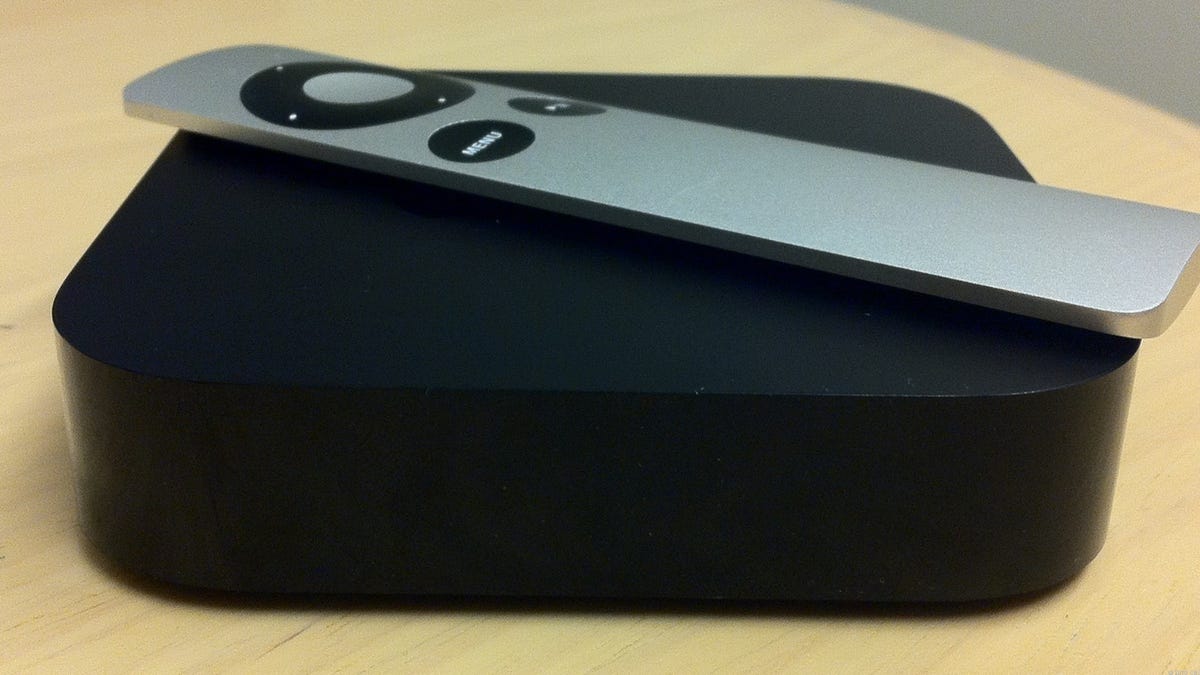Apple TV: Losing the tiny remote can be a big headache
The Apple TV's sleek and tiny design is slick, but the lack of buttons on the device can be a real problem when the remote goes missing.

We love the Apple TV's incredibly small and sleek design, but it's worth remembering that Apple's minimalist design ethos has its trade-offs. A friend recently e-mailed about her ordeal after losing her Apple TV's remote:
My problem with my Apple TV was seemingly simple--I lost the remote and I couldn't get the Remote App to sync my Apple TV with my iPhone. But why couldn't I get my Remote App to sync? Because I had to change settings on my Apple TV...that I could only switch VIA REMOTE. See the problem? This brain twister challenged two customer support people on the phone and my Mac Genius at the store. I don't think it was an issue with their competence, at all, but rather a flaw in the Apple TV design.
We're always quick to point out that the Apple TV can be controlled with other iOS devices, but if the remote goes missing and you haven't turned on Home Sharing yet, you're out of luck. (In fact, if you have an Apple TV, it's a good idea to make sure you turn on Home Sharing now, before your remote goes missing.) Also, the Remote app workaround isn't really a suitable backup plan, since not every Apple TV owner necessarily owns an iPhone, iPad, or iPod Touch that can be used when you can't find the included remote.
A quality universal remote like a Harmony would also do the trick, but not everyone has one of those, either. (Those cheap remotes you can pick up at the drugstore may have codes for old Sylvania VCRs, but they probably don't have them for Apple products.)
While my friend previously loved the Apple TV's sleek look, her struggle had her reconsidering how she thought it should be designed:
My recommendations for the third generation of Apple TVs:1. I know it's not chic like a plain black box, but small buttons on the Apple TV would be helpful so the product can still be used if there's an issue with the remote and/or the owners' iPhone or iPad.
2. It would also be nice if there was a way to control the Apple TV via iTunes. That would eliminate the ugly button issue.
3. If the product is only going to be functional with a remote, please manufacture a remote that is bigger. The remote, while very pretty, slipped somewhere into my couch, never to be found again (I think it actually slipped into the bones of the sofa).
4. My eyeballs and the eyeballs of the Mac Genius almost broke because the serial number is in a very tiny, metallic font on the bottom of the AppleTV. It is hard to read small numbers and letters when they are reflecting light. It is pretty, I KNOW, but still.
Personally, I think the ability to navigate the Apple TV via iTunes would mostly eliminate the problem. (I like the tiny remote.) And because the Apple TV's menu system is already designed with the basic remote in mind, all you'd need it is a simple onscreen remote with a directional pad, and OK, menu, and play/pause buttons.
Though it's easy to focus on the shortcomings of the Apple TV, you'd run into similar problems with essentially all of the Apple TV's competitors. The Roku XDS, Boxee Box, and Sony SMP-N100 all lack navigation controls on the device. You can get smartphone control working on a Roku XDS without the original remote, but you need the Roku's IP address to set it up. And the easiest way to find its IP address is...using the original remote to browse to the "info" screen in the Settings menu.
Luckily my friend's story had a happy ending: the "Mac Genius" wound up giving her a new Apple TV remote for free. (A generous concession, since a replacement remote normally costs $19.) But even though things eventually worked out, she seemed less enthusiastic about her Apple TV and modern gadgets in general.
I know this info makes me sound like a 80-year-old woman who yearns for the days of VCRs and is primarily interested in large-font crossword puzzles, but I am a tech-savvy lady in her twenties who owns a slew of Apple products. The Apple TV is great and I loved it but I shouldn't have to dedicate 4-5 hours of troubleshooting because I lost my remote. If I had that problem in 1990, I would just work my TV manually until I was at CVS and could pick up a $10 universal remote. With the Remote app and all this modern technology, I should not be wishing for the ease of VCR days.
It's a point worth remembering. Old tech may look hopelessly clunky by today's standards, but it almost always had basic controls on it. I still prefer my gadgets will fewer buttons rather than more, but manufacturers need to realize that losing a remote is common and there needs to be a backup plan.

